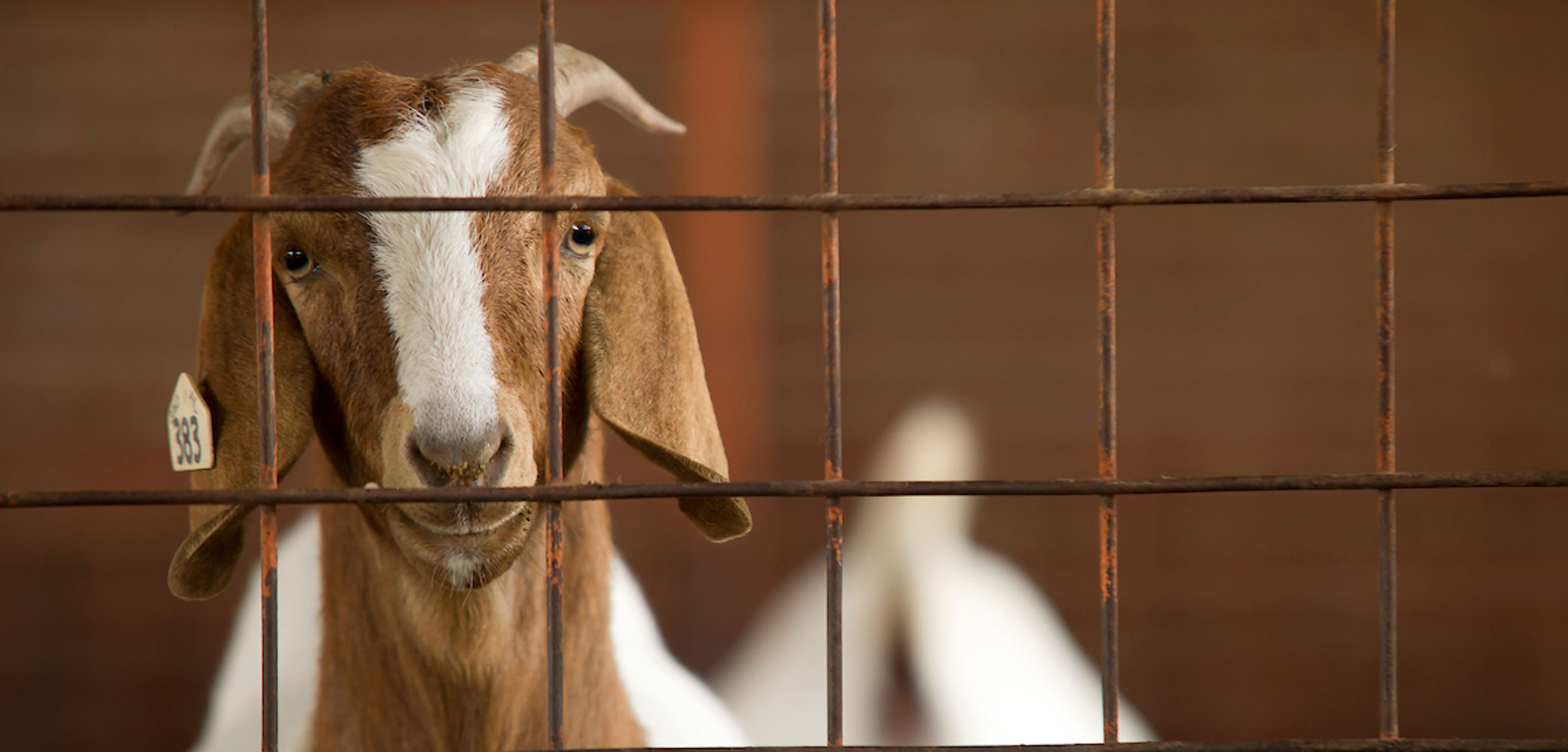
Veterinary Viewpoints: The Basics of Goat Care
Thursday, September 1, 2022
Media Contact: Kaylie Wehr | Coordinator, Marketing & Public Relations | 405-744-6740 | kaylie.wehr@okstate.edu
Goats require less area to raise than cattle or horses, which makes them popular among people living in suburban areas with 1-2 acres of land. Before beginning your goat herd, be sure to check the zoning requirements in your area.
In some areas, goats are defined as livestock, while in other areas they are defined as companion animals. It is also good to familiarize yourself with basic goat care before beginning your herd.
Goats by nature are very tolerant of all kinds of weather and can adapt to many different styles of housing. Despite their hardiness, when goats are under extreme wet and drafty conditions for long periods of time they are vulnerable to respiratory infection and hypothermia.
Shelter
Open or loose housing allows goats to have protection from weather conditions while also giving them open access to pasture. Goat shelters do not need to be expensive. Three-sided shelters, open to the south side, that protect the goats from wind and rain are adequate. Greenhouse barns, calf hutches and even large dog cages provide sufficient shelter for goats. Straw or wood shavings can all be used as bedding. Goats need about 10-12 square feet of bedded area per goat to be comfortable.
Aside from housing goats in a well-ventilated shed or barn, it is also important to regularly remove bedding soiled by manure and urine to minimize the formation of excessive amounts of ammonia. Ammonia can cause respiratory infections and pneumonia, especially if the barn is poorly ventilated.
Feeding
For feeding hay, grain or concentrate, 16 linear inches of feeder space is sufficient per doe, or 8-12 linear inches of feeder space if hay is self-fed. For young stock, recommendations are 12 linear inches of feeder space per animal, or 2-4 linear inches if hay or grain is self-fed. Troughs need to be easy to clean, should prevent goats from urinating or defecating on the feed and be accessible from both sides. Fresh, clean water should be available at all times.
Fencing and working facility
If doable, a working facility will help operations like sorting, ear-tagging, vaccinations, giving medication, hoof trimming, etc. A small pen with some means of herding the goats into it is usually sufficient for small operations. The pen should be sturdy, preferably solid-sided, and at least 5-6 feet tall.
The last factor involved in housing goats is the fencing system. Goats often require a two-fence system consisting of an exterior fence (perimeter) and an interior fence (cross fence). The perimeter fence will keep your goat in and predators out. High-tensile goat fence is popular, but can be expensive. Most goats can be taught to respect an electric fence, however, when panicked, a goat will clear or run through any fence. A permanent goat fence should have four strands of electric wire. The bottom strand should be no more than 6 inches off the ground.
While goats tend to require less management than other livestock species, such as cattle or horses, it is important that primary veterinary care be established for your goat or goat herd. Many of the previously discussed goat housing basics can be talked over with your veterinarian in addition to annual vaccinations, herd disease management/prevention, dehorning, castrations and dietary considerations. Establishing primary veterinary care for your herd also allows you to plan ahead for any instances in which emergency care may be needed.
About the authors: Dr. Melanie Boileau is a professor in the Department of Veterinary Clinical Sciences
at Oklahoma State University’s College of Veterinary Medicine. She holds the McCasland's
Clinical Professorship and serves as the Food Animal Service Chief and Large Animal
Section Chief for the hospital. Boileau is Diplomate of the American College of Veterinary
Internal Medicine.
Dr. Taylor Strickland is a resident in food animal medicine at the Veterinary Medical
Teaching Hospital.
Veterinary Viewpoints is provided by the faculty of the OSU Veterinary Medical Teaching Hospital. Certified by the American Animal Hospital Association, the hospital is open to the public providing routine and specialized care for all species, as well as emergency care. Call 405-744-7000 for an appointment or more information.
OSU’s College of Veterinary Medicine is one of 33 accredited veterinary colleges in the United States and the only veterinary college in Oklahoma. Established in 1948, the CVM is dedicated to the education and development of skilled veterinarians who are committed to the protection of human and animal health. The college’s Veterinary Medical Teaching Hospital is open to the public and provides routine and specialized care for small and large animals. The hospital offers emergency care and is certified by the American Animal Hospital Association.. For more information, visit https://vetmed.okstate.edu/ or call 405-744-7000.
